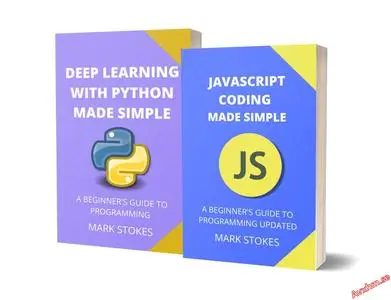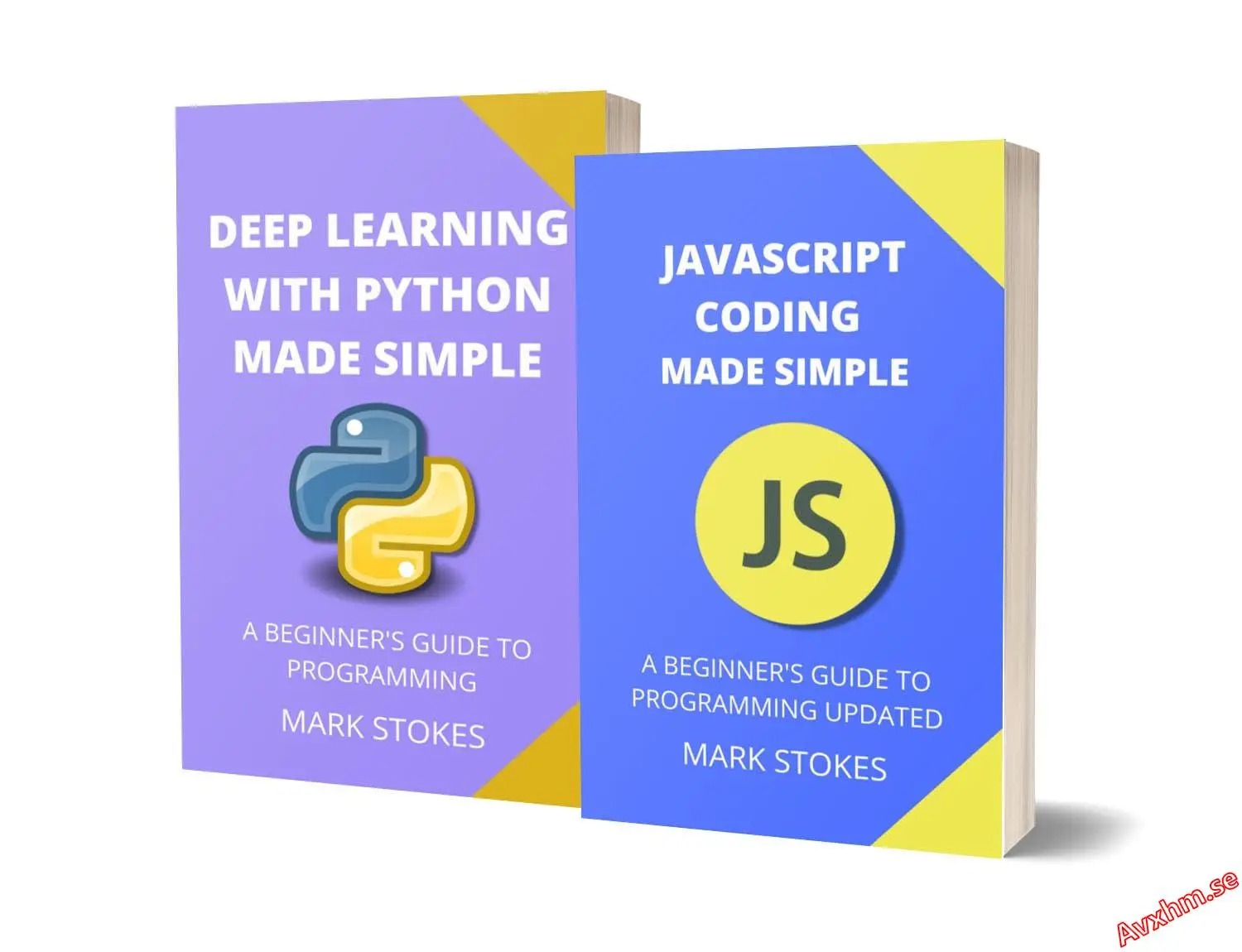JavaScript and Deep Learning with Python Made Simple: A Beginner’s Guide to Programming 2 Books in 1
by Mark Stokes
English | December 24, 2023 | ISBN: N/A | ASIN: B0CQWZ39KH | 208 pages | PDF | 33 Mb
by Mark Stokes
English | December 24, 2023 | ISBN: N/A | ASIN: B0CQWZ39KH | 208 pages | PDF | 33 Mb
Features of JavaScript:
1. Used in web and mobile application development:
JavaScript is extensively utilized for building both web and mobile applications. It offers a wide range of frameworks and libraries that simplify the development process, making it a go-to language for developers.
2. Scripting language interpreted by an engine:
Being a scripting language, JavaScript is executed by an engine embedded within web browsers. This allows developers to write code that can directly manipulate the elements and behavior of web pages, providing an interactive user experience.
3. Object-Oriented Programming language:
JavaScript follows the principles of Object-Oriented Programming (OOP), allowing developers to organize their code into reusable objects and classes. This makes it easier to build complex applications and maintain code readability.
4. Creation of beautiful and fast web applications:
With JavaScript, developers can create visually appealing and responsive web applications. It offers numerous libraries and frameworks like React and AngularJS that enable the development of modern, user-friendly interfaces.
5. Dynamic and fast nature:
JavaScript's dynamic nature enables developers to modify and update content on web pages without reloading the entire page. This results in a smoother and more interactive browsing experience for users.
6. Cross-platform compatibility:
JavaScript is compatible with multiple platforms, including different web browsers and operating systems. This ensures that applications built with JavaScript can run seamlessly across various devices, providing a consistent experience to users.
7. Front-end and back-end application development:
JavaScript is not limited to front-end development alone. It can also be used for server-side programming, thanks to frameworks like Node.js. This allows developers to build robust, scalable, and efficient back-end applications.
"Deep Learning with Python Made Simple" is the perfect guide for beginners who want to dive into the exciting world of deep learning using the Python programming language.
With easy-to-follow explanations and hands-on examples, this book breaks down complex concepts into manageable steps, ensuring that even readers with no prior experience can grasp the fundamentals. Each chapter provides clear explanations, code snippets, and practical exercises to reinforce your understanding and enhance your learning experience.
**Key Features:**
- Gain a solid understanding of deep learning concepts and techniques.
- Explore popular deep learning frameworks such as TensorFlow and PyTorch.
- Build and train neural networks for image recognition, natural language processing, and more.
- Learn how to preprocess and prepare data for deep learning models.
- Understand the challenges and considerations in deploying deep learning models in real-world applications.
- Address ethical considerations and bias issues in deep learning.
- Get insights into interpretability and explainability of deep learning models.
- Discover the future directions and potential impact of deep learning in various industries.
Whether you're a student, a professional, or an aspiring AI enthusiast, "Deep Learning with Python Made Simple" equips you with the knowledge and skills needed to start your journey into the exciting field of deep learning. Get ready to unlock the power of Python programming and unleash the potential of deep learning to solve complex problems.
Begin your deep learning adventure today!



